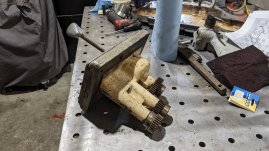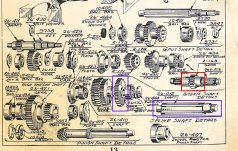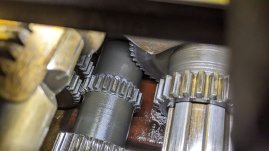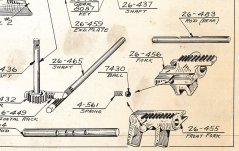jdbouchard60
Aluminum
- Joined
- Jan 5, 2023
- Location
- Canada
Thank you for that information.There is some bad information about VFD drives above.
If you have a machine tool with multiple motors and want
to run off one VFD, you absolutely can.
A strategy that works well, it to wire the VFD directly to the
main motor. Branch off this feed to the main motor, and feed
the switches or contactors that run the smaller motors.
Things like power feed motors or coolant pump motors.
In this way, with the main motor constantly connected to the
VFD, there is no circuit being broken. The VFD is happy.
As for the switching of the other motors, the VFD is protected
from inductinve spikes from the switch contacts by the riunning
main motor. Spikes on the line are just pee in the pool on the
line feeding the running motor.
The worry about many motors confusing the VFD is not an issue
if you use a Volts-Hertz configured VFD. If you bought the more
expensive sensorless vector VFD, you can run it in Volts-Herts
mode, as you really don't need that feature. I have sensorless
vector mode turned off on my milling machine VFD, because it
has so much torque, that it will snap a tap when rigid tapping
holding a tap in the drill chuck.
That is as simple as I can explain it. Buy a VFD to support the
total horsepower of all the motors, and buy the basic Volts-Hertz
model. If you wire the VFD output straight to the main motor, and
branch off for your switched accessory motors, you will never hurt
the VFD.
FWIW- I own a VN22LU
--Doozer
I decided to go for two VFDs because it gives me the ability to independently speed control eachmotors at almost the same price.
The Invertek drives that I bought from Wolf Automation were 2HP $266 and 3HP $366 ($632 total). A 5HP drive to control both motors would have been $628. So, for the same price I gained the ability to fine tune each motor to it’s drive and got two speed control.
Last edited:
















